Shahzia Sikander’s exhibition at The Asia Society opened last week in Hong Kong. On view through July 9, “Apparatus of Power” explores the city’s present and past colonial issues in a series of drawings and animations. This week, during Art Basel Hong Kong, a special print edition—a set of four prints and an original text by Ayad Akhtar inspired by the Mi’raj—will be released at the Pace Prints booth. Whitewall spoke with the artist about both projects.
WHITEWALL: You specialize in a traditional style of Indian and Persian miniature painting. What first made you interested in adopting this style, and how did you adapt it to suit your own artistic interests?
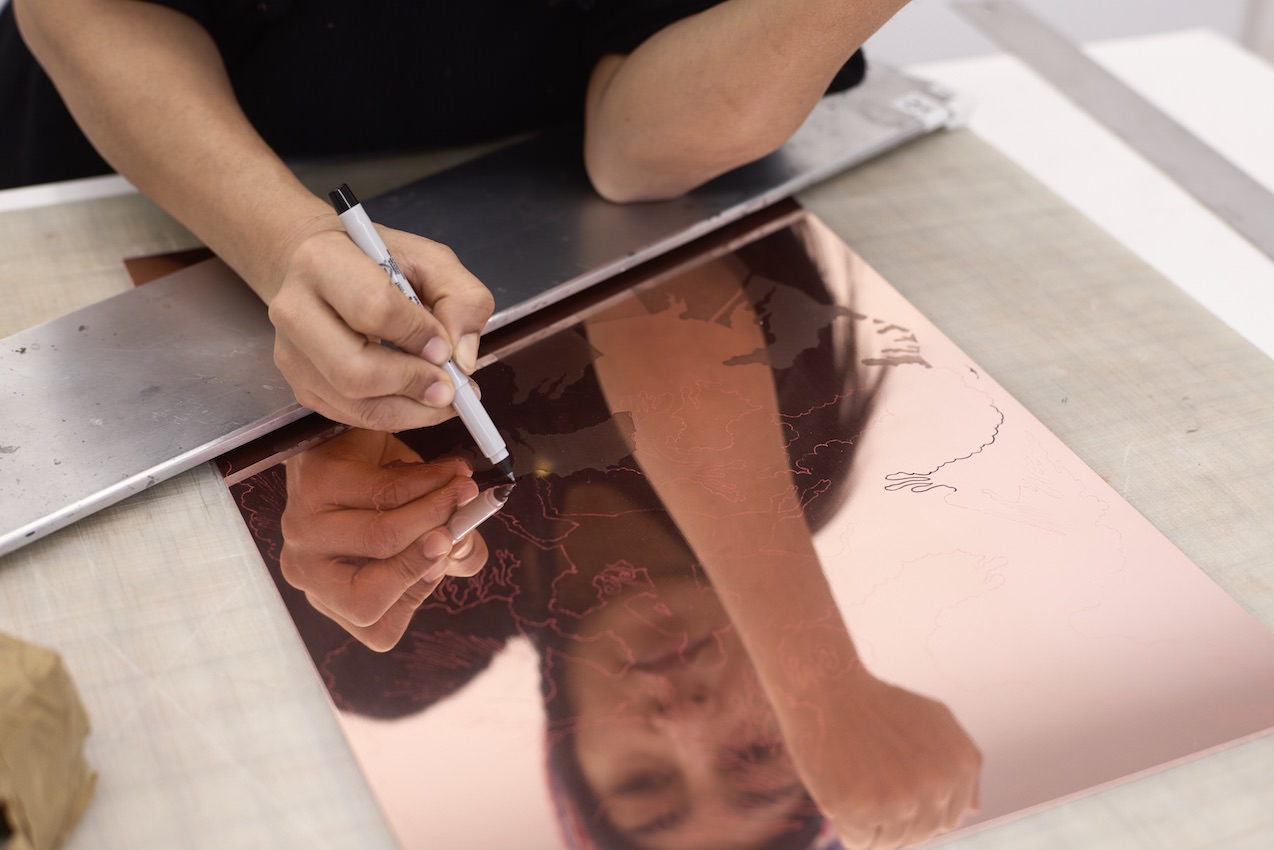
Shahzia Sikander working in the Pace Prints workshop. Courtesy of Pace Prints.
SHAHZIA SIKANDER: My first visual encounter with miniature painting was growing up in Lahore, Pakistan, before I had any formal engagement with art. Token traditional forms, reductive, and imitative miniature painting imagery abound as kitsch on batiks, cheap knock out paintings and other tourist memorabilia. In 1987 when I joined the National College of Arts, I was intrigued by the Miniature Painting department. At that time, miniature painting was more of an anomaly amid the highly Westernized teaching methods. It was dismissed as derivative, burdened with excessive craft and no critique, it represented the unpopular, the unhip. It was precisely its status as the underdog that inspired me to expand miniature painting from within, embracing its craft, technique, rigor, detail, and small scale, as well as its historical contexts. I chose to work with its traditional materials, language, and methodology with the aim to subvert it with a polemic narrative outside of its accepted thematic discourse, and to dislodge it from its dominant history.
The idea and intention was to “transform” something old into something new, something that was stagnant into something that would spark a discussion. It was exciting to examine, imagine, and explore the many possibilities of miniature painting, whose future as a viable idiom and contemporary mode of expression had not yet been laid out in any clear terms. That was the appeal.
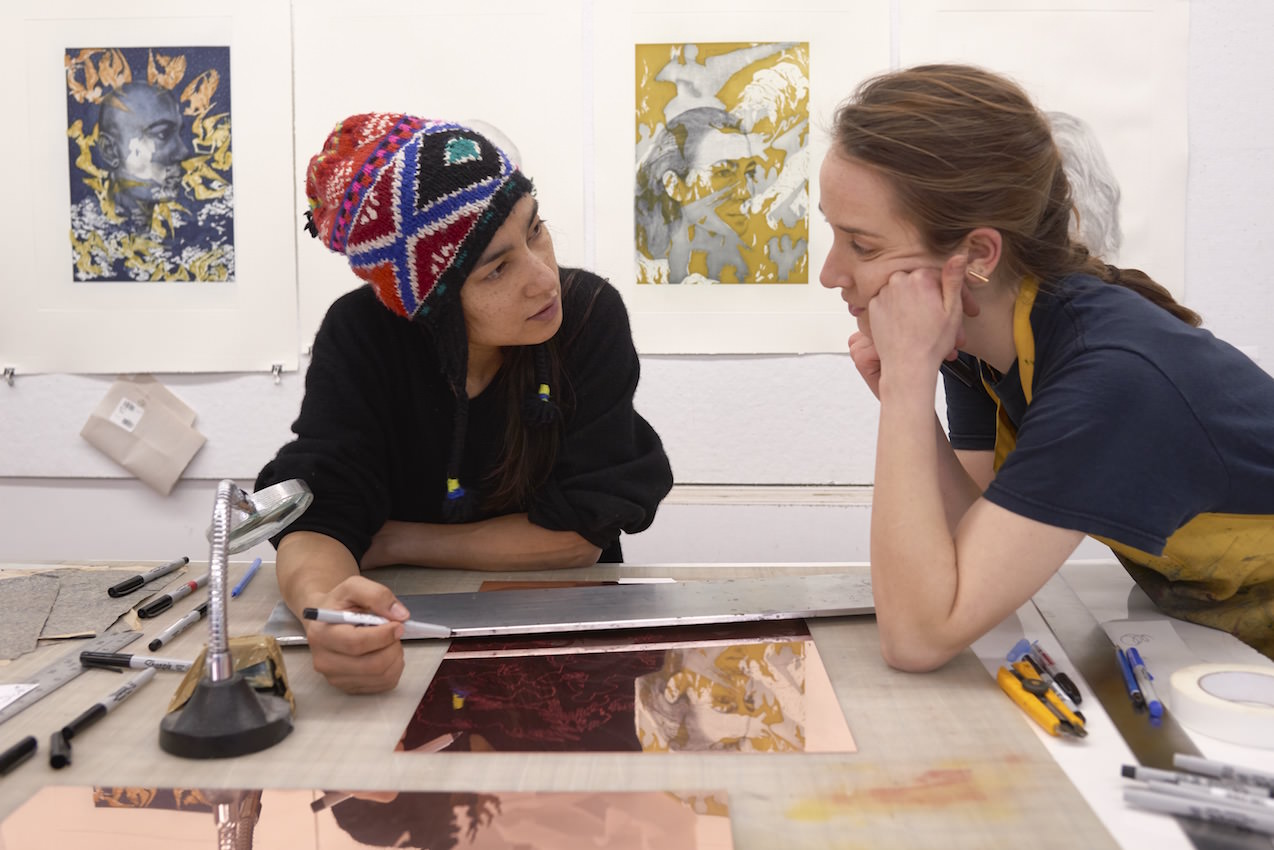
Shahzia Sikander working in the Pace Prints workshop. Courtesy of Pace Prints.
WW: How is your video work an extension of your painting? What does it allow you to express that painting doesn’t?
SS: I am interested in the dislocation of objects and forms and how meaning is constantly in flux. Historically, the movement of objects such as in trade and colonial occupation allowed their meaning to shift as they entered different contexts. Animation allows me to challenge limits imposed by a painting.
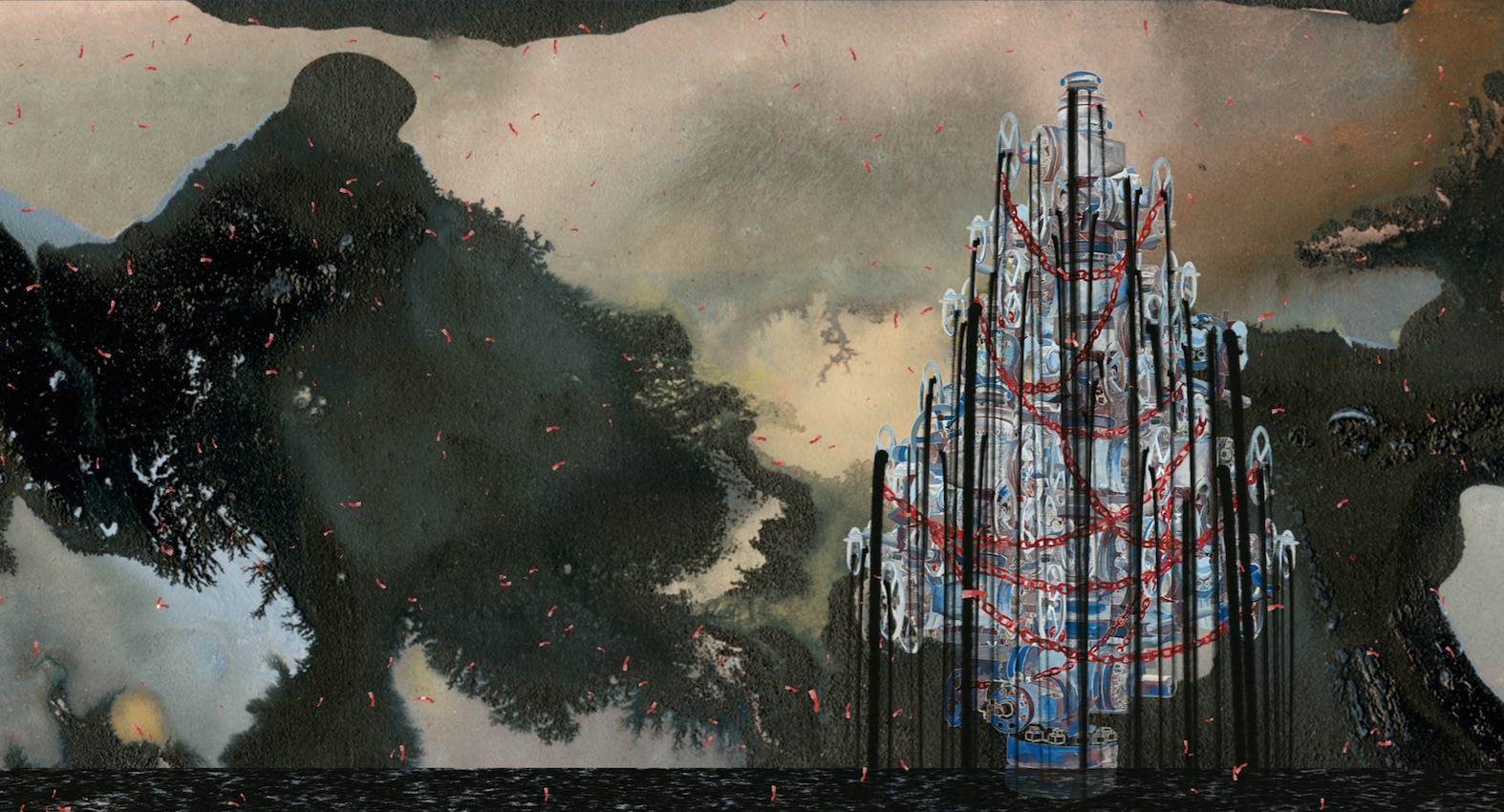
Shahzia Sikander
Video animations are to a great degree dependent on the drawings, especially successful drawings, since all nuances and marks are magnified in HD format. Ideas housed in stationary paintings and drawings are put into motion to create narratives that also play on sensorial and immersive experience. Sound too aides navigation. Both the drawing and the digital are interconnected in that the weight, shape, kinetic and mimetic relationships are in tension with one another.
The animation also preserves the performative act of painting on paper as well as the physical encounter between ink and paper. Working with a composer marks another departure. I have worked with the Chinese American composer Du Yun since 2010 and the collaborative thrust has allowed the videos to further embrace improvisation. Du Yun’s work exists at artistic crossroads of chamber music, theater, pop music, cabaret and storytelling, all aspects prevalent in my exploration of narrative rhetoric.
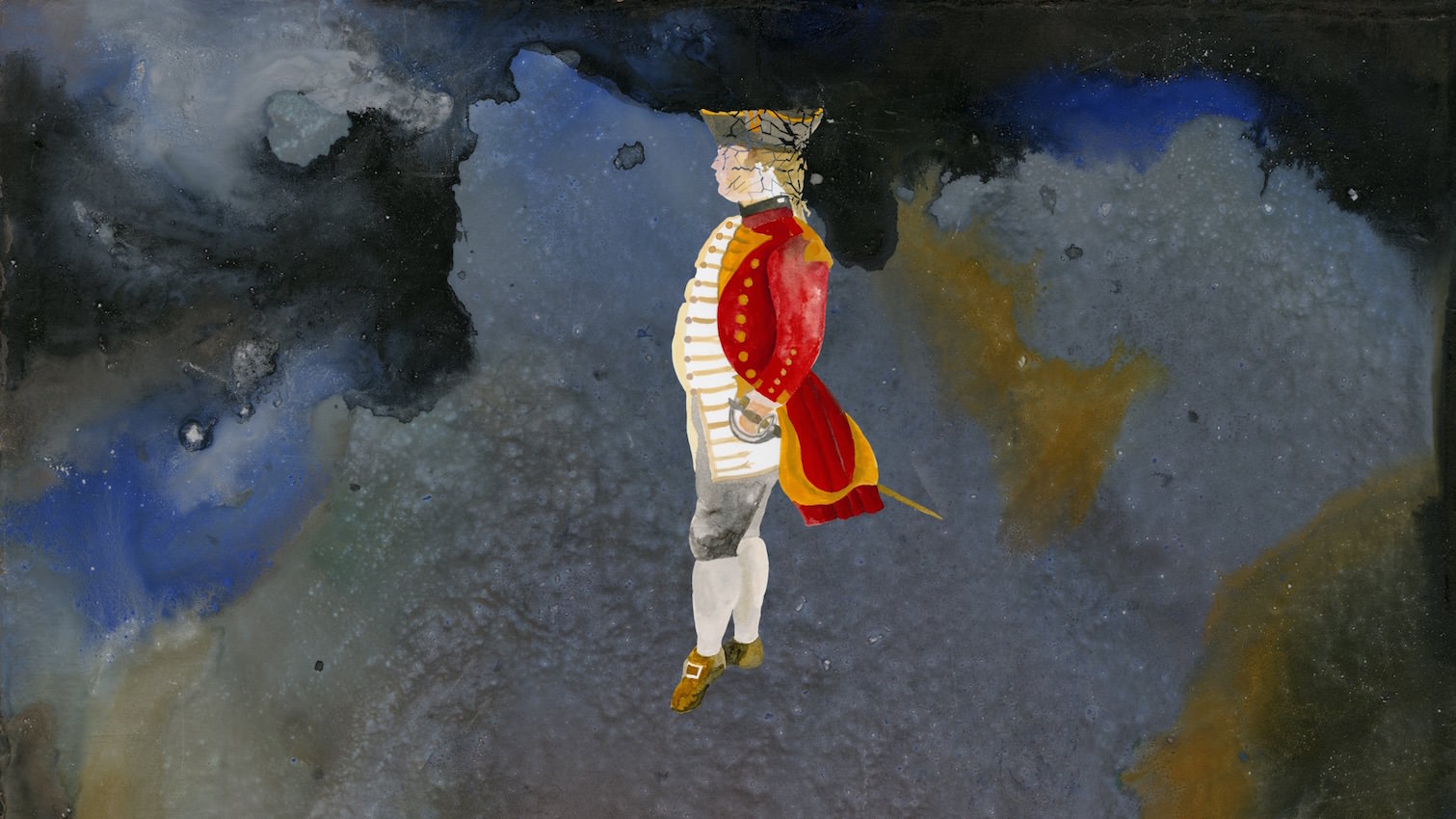
Detail from Parallax
2013
WW: Could you explain some of the main themes in your upcoming solo exhibition “Shahzia Sikander: Apparatus of Power” at the Asia Society in Hong Kong?
SS: “Apparatus of Power” refers to the potential of an image to communicate in multiple contexts, forms, and formats. The notion of inventiveness is explored at length in this exhibition. It looks at the language I have developed over the years with its capacity to adapt to different geopolitical landscapes and visual idioms. The curatorial thread investigates the imaginative possibilities of a work of art as a thing that is alive and breathing, durational, with a spatial-temporal component. The apparatus of power implies a sensitivity to time, as time operates differently depending on geographic location and historical context.
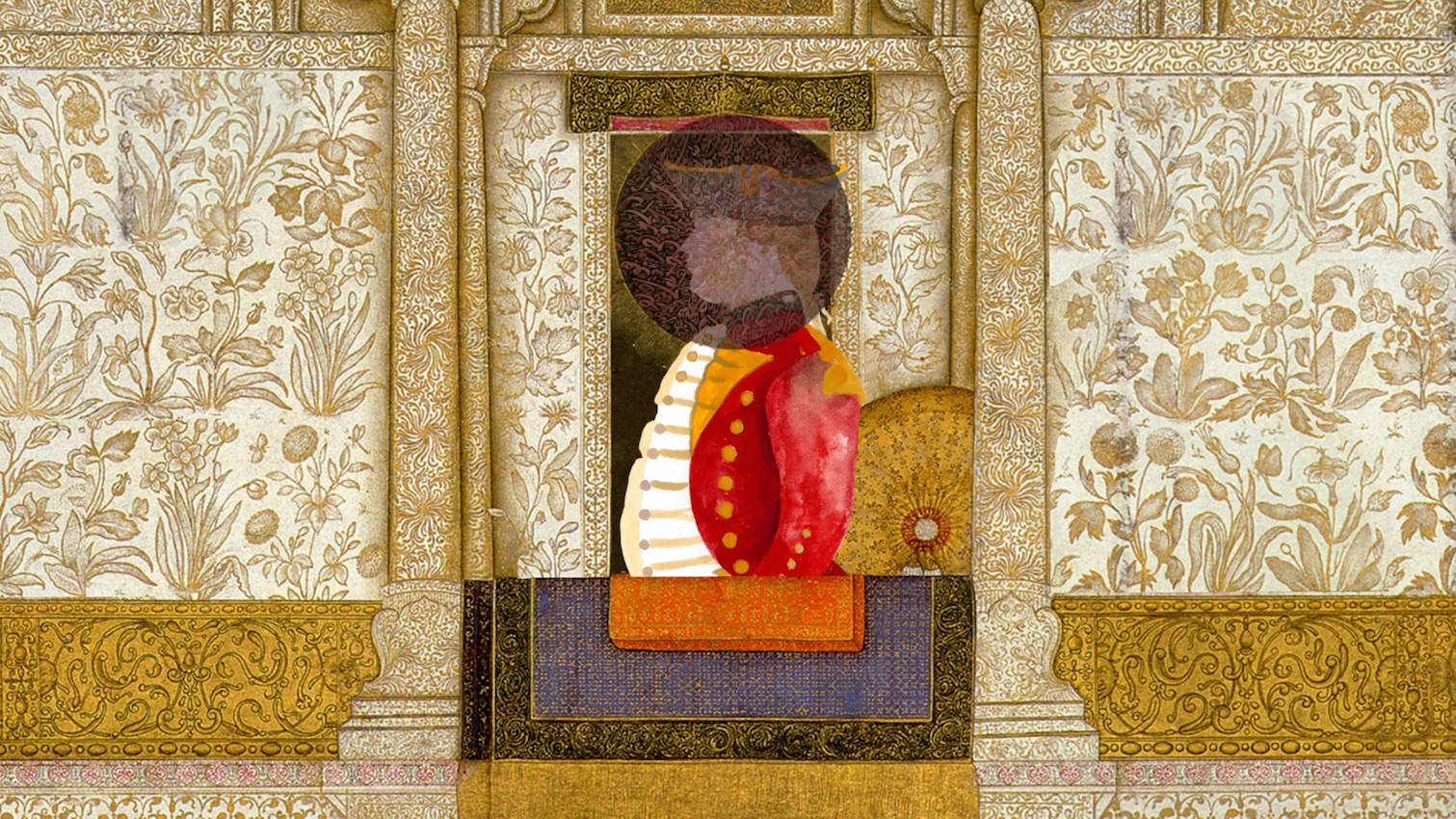
3-channel HD digital animation with 5.1 surround sound
While I understand how cultural and historical traditions clearly inform identity, I also aim to define and redefine representations within such contexts through my work, resulting in ownership of my identity and not some outward idea of it. Colonial legacies and the effects of partition have been subject matter for my work for years, and the impact of the East India Company is central to my current studies. Fragmentation in my work represents the interstitial stage. Disrupting entrenched ideas or formats, rethinking by bringing together disparate elements, and challenging epistemologies, perceptual schemes, and traditions of representation are all ways I highlight how mercurial identity can be.
WW: You are currently working on your first ever print for Pace Prints. How did this collaboration come about?
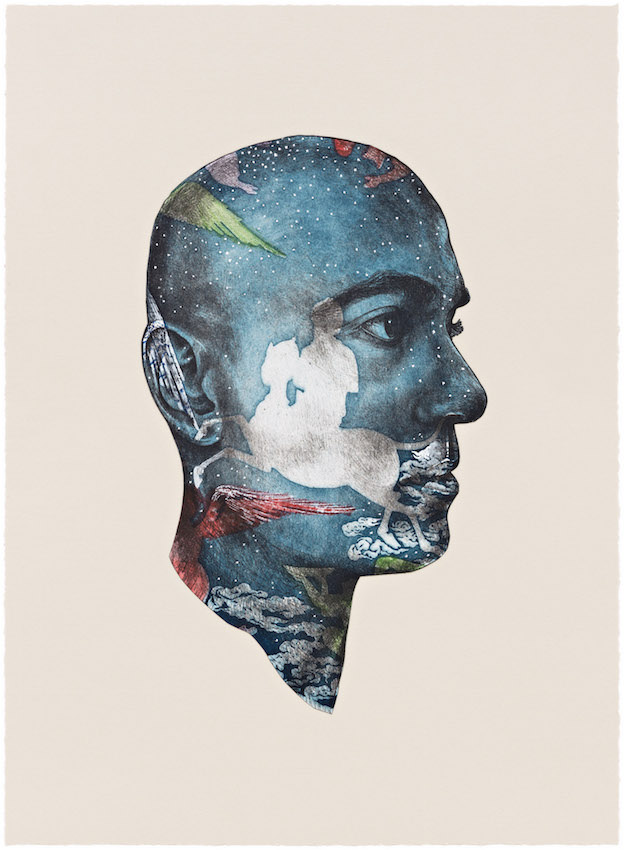
15 minutes
SS: I have known Pace Prints for years and appreciate the projects they develop with artists. There is a certain generosity of spirit and care to every project they collaborate on. Pace also has highly talented master printers to work with. I had wanted to work with them for a long time so am very glad that the timing finally fell in place.
WW: What was the inspiration behind the design? Could you tell us a little about what the design represents?
SS: Comprised of four etchings, the edition references historical Mi’raj paintings the visionary night journey of the Prophet Muhammad, a salient motif in Central-Asian and Indo-Persian miniature painting. Mi’raj can be read as a metaphor for the realm of the imagination and the emotional process of trust necessary in seeking artistic truth. As a motif, the Mi’raj also engages the idea of inventiveness, in how a historical “stock” form can communicate in contemporary expression.
The interest in using Mi’raj as a lens in this work arose from my conversations with Pulitzer prize-winning playwright and novelist Ayad Akhtar. Akhtar himself has written about the Prophet, and his writings evince an awareness of the manifold ways the Prophet operates in the cultural psyche of what we could call the contemporary ummah, or Muslim community. Akhtar’s deep understanding of the Prophet’s legacy and his simultaneous presence as a literary figure, literary subject and artistic precursor, among other things inspired me to make a visual commentary. In the Portrait of the Artist series, the “idea” of the artist is evoked, including the idea of the Prophet as artist. Akhtar’s plays are emotionally rife with converging and conflicting responses and do not fit any obligatory idea of a Muslim identity, a similar trait I recognize in my premise of a shape-shifting identity. Within the crystallized representations of the historical Mi’raj paintings, the artists’ portraits in the etchings also function as vessels through which history passes.
WW: How did creating this print differ from your typical creative process?
SS: Printmaking is such a unique way of thinking in that one has to look at the larger picture to arrive at an understanding of the process. Drawing can be far more amorphous creativity and at times frustrating! Printmaking is equally creative at every step with the added layer of unexpected and often magical results offered in the process. Etching offers nuance and detail which works well with my miniature painting sensibilities. Color is such an important language in my work. Printmaking works well for me to explore the endless combinations of color, opacity, transparency and hue.
“Apparatus of Power” is on view through July 9 at Asia Society.









